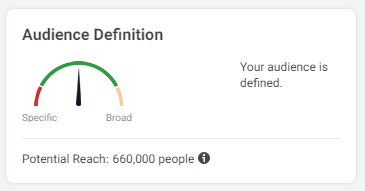
Subscribe to our newsletter!
We don't spam. You will only receive relevant and important tips for you and your business.
Unsubscribe anytime.
Is your business running Facebook Ads? Are they optimized to earn your business the most profit for your budget? If not, they could actually be hurting your business and just wasting a lot of money. If you’re new to Facebook Ads or aren’t up-to-date on the ever-changing landscape, you may be guilty of a few of these common mistakes.

Facebook offers a ton of metrics that you can use to track your campaign performance, like reach, clicks, impressions, cost-per-click, click-through rate, conversions, and more.
Your marketing goals inform the metrics you measure. For example, if your marketing objective is for users to fill out a contact form, then you should be tracking click-through rate, cost-per-click, and conversions.
Even if you’re confident that your ads are best optimized, you should monitor them on a weekly basis. Don’t just set them up and let them run for three weeks. Be sure to monitor things such as frequency, clicks by interest, click-through versus conversion rates, and the number of leads.
There’s no point in serving an ad to someone who’s already purchased on your site, right? They likely won’t act on the ad and it will just end up wasting your budget.
To combat this, ensure that you have excluded individuals who have already converted. The easiest way to do this is to create a list of those who have visited your Thank You page, completed a purchase, or submitted a form. Then use Facebook’s Custom Audience option to exclude these individuals from seeing your ad.
In this case, we excluded users who submitted a lead form in the past 180 days.

You can also exclude users that Facebook categorizes as “Engaged Shoppers” or those that already follow your Facebook page. This way, you’re not wasting your budget or annoying your customers.
Not using your Facebook Pixel is perhaps the biggest mistake you can make.
The Facebook Pixel is a snippet of code that you have to install on your website that will track the behavior and actions of visitors on your website.
You can use the Facebook Pixel to make sure your ads are shown to the right people, drive more sales, and measure results.
First, go to your Facebook Pixel settings and make sure that your first-party cookies are on and Automatic Advanced Matching is on.
By turning on first-party cookies, your Pixel will be implemented on your website and read by browsers as the main code, which will make sure that your Pixel can function as it should on most browsers.
With Automatic Advanced Matching on, your Facebook Pixel will match data like phone numbers and email addresses to people on Facebook, which can help you get more conversions and reach more people.
There’s no “correct” audience size, as it will depend on your business, industry, and marketing objectives. However, it’s important that you pay attention to the audience size and make sure that it isn’t too big or small for your specific business.

Facebook Ads uses a machine-learning algorithm to determine who to show your ads to. If you have a very broad audience, not everyone will see your ad. Instead, Facebook will segment this audience into smaller groups and show your ad to the group most likely to fulfill your marketing objective.
If your audience is too big, Facebook will test audience segments before determining the best one, which can quickly use up your budget with inconsistent and insufficient results. This testing is called the “learning phase”, and your ads will be in this phase when you start running a new campaign.
When your audience size is too small, Facebook can have difficulties in the learning phase as it can’t test your ad’s response to different audience segments.
When writing your ad copy, you need to consider the primary text, headline, and description.

The headline appears below the visual and needs to convince visitors to click your ad. While the headline isn’t the most important text element, it should be used to reinforce the ad’s message. It can be used to highlight a sale, a unique selling proposition, or promote branding.
You can input up to 10 headlines. Each headline can have a maximum of 255 characters, but according to AdEspresso, the average length for a Facebook ad headline is just five words. A headline with forty or fewer characters is going to get a lot more engagement and won’t get cut off. Making your headline too long could cause users to lose focus and attention. Instead, aim for a headline of around five words, making it clear and concise.
The description is optional but should be used as a call-to-action. Like the primary text, you can input up to five descriptions.
Overall, your ad copy should be simple and straightforward. Use language that’s easy to understand to grab your audience’s attention and encourage them to click through.
A call-to-action (CTA) lets your viewer know what to do next and can, in some cases, be the determining factor between an impression and a purchase.

In Facebook Ads, you can include a CTA button, such as “Learn More” or “Order Online”. But to make it more clear for your customer, you can also add a call to action to your ad description or headline.
When running Facebook Ads, especially if you don’t have a ton of experience, it’s normal to be nervous about losing money.
Once your ad starts running, the cost-per-result (CPR) will generally be pretty high for the first few hours.
This is because, as previously mentioned, new ads first go into a learning phase. This means that your audience will be segmented, and Facebook’s machine-learning algorithm will test your ad on different audience segments.
In other words, Facebook is still learning who will respond well to your ad and who won’t. Once it gathers this data, your ad’s performance will increase over time.
Some beginners make the mistake of turning the ad off after it has spent just a few dollars, however, it is best to keep your ads running during this period.
Need help managing your Facebook Ads?